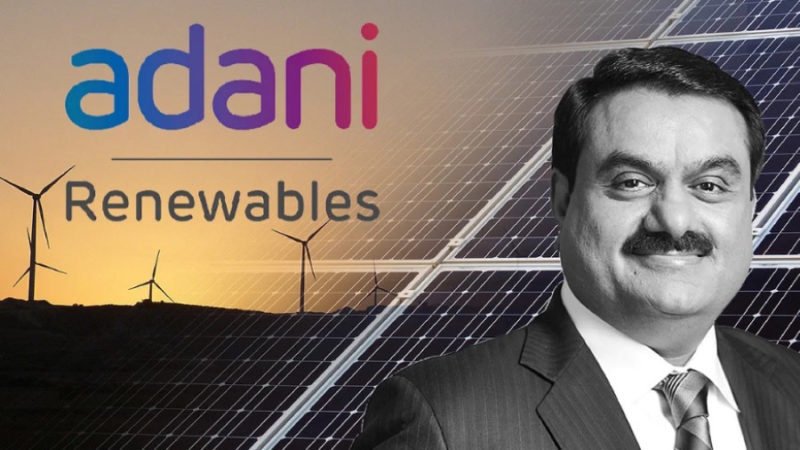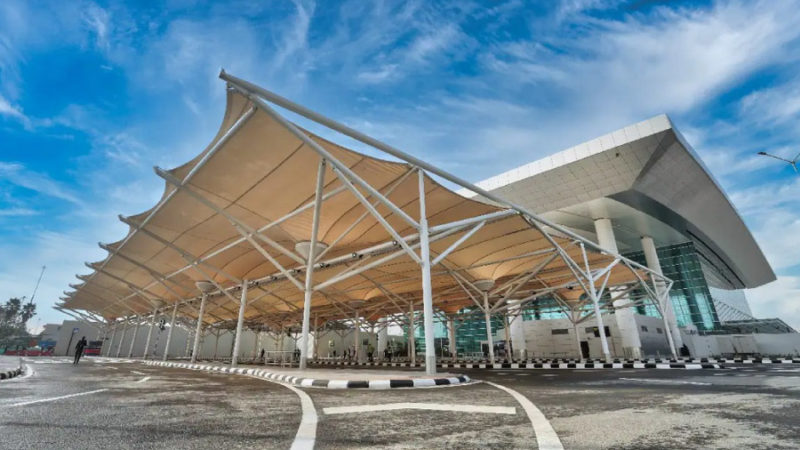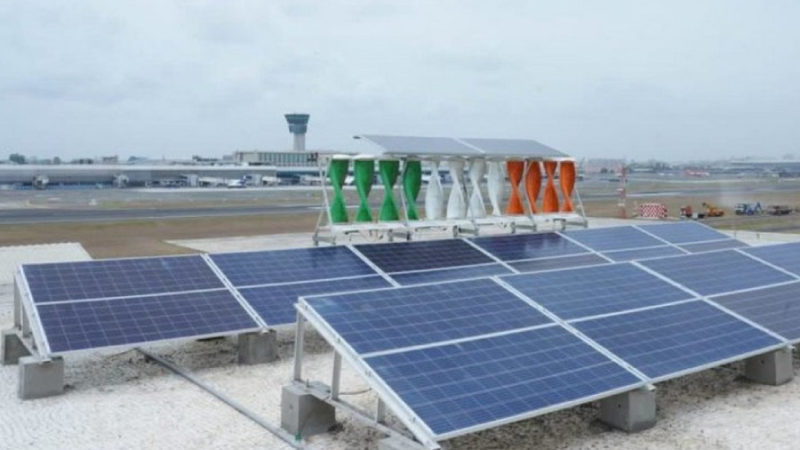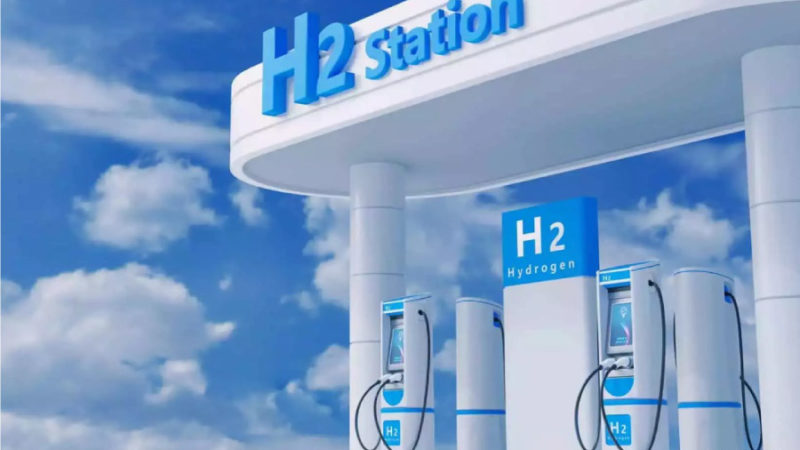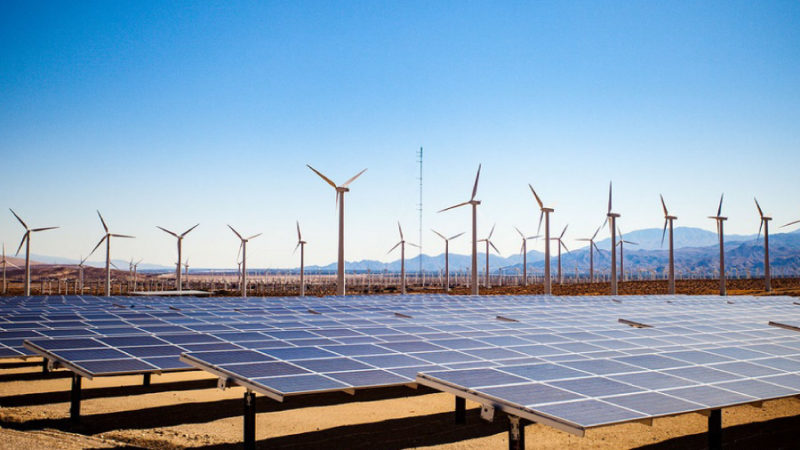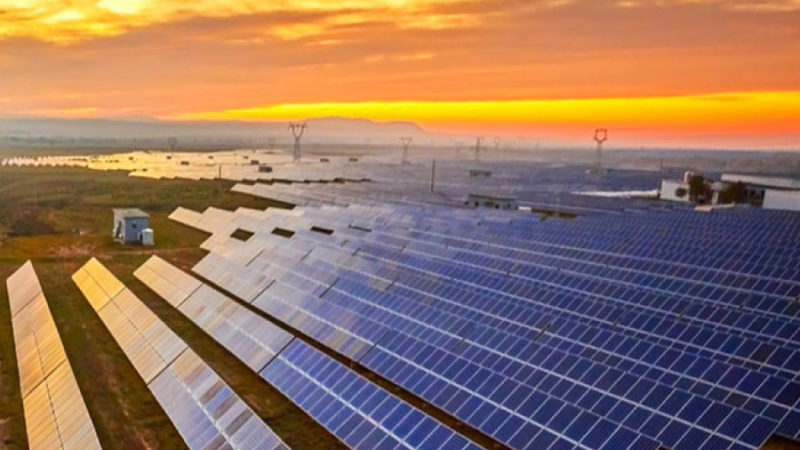Floating Solar Market in India Set to See Positive Growth
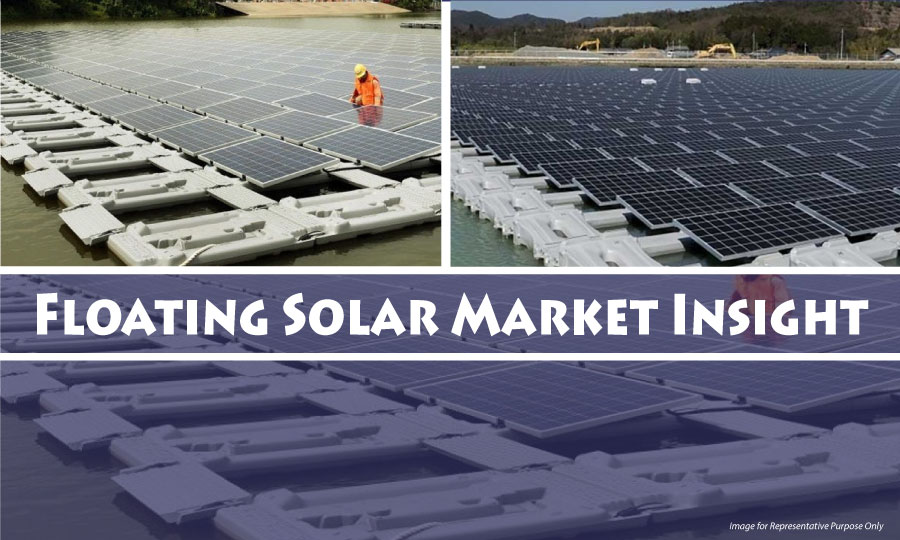
The floating Solar market is gaining momentum in India. This solar photovoltaic technology overcomes the problems of land availability and has a huge potential to replicate the success of ground-mounted systems in the country…
Many nations across the globe have placed strict environmental restrictions, coupled with tax refunds and other financial incentives to encourage the use of renewable energy. No doubt, these measures have helped renewable energy sources to gain popularity across the globe – especially solar energy that is clean, efficient, and abundant has lately become the most favourite.
Though, solar energy is one of the most efficient ways to generate power without using fossil fuels, and stands out to be an amazing solution to the global energy dilemma. However, as the land-mounted solar systems require large land area, which is very expensive and difficult to avail – it deters the scope of its increasing adoption.
This is benefiting in a big way – the Floating Solar power generation – an amazing solar PV technology that is gaining traction across the globe.
Floating Solar Power Plants
Floating solar is an innovative and exciting use of solar PV technology that was mainly developed to address land availability issues. Predominantly the land challenges has benefited the floating solar market, as PV plants are erected on water bodies such as lakes, ponds, dam reservoirs, and oceans. This frees up land for other uses, such as agriculture or building, which is why governments are increasingly interested in putting up floating solar projects.
Key drivers to floating solar attractiveness:
- Land challenges solutions – Floating solar negates the need for a costly and time-consuming land procurement process;
- Existing grid infrastructure use – Floating solar projects located in the vicinity of hydro-electricity reservoirs may be able to use existing transmission infrastructure;
- Increased generation – In the comparison of ground-based projects a higher generation of around 3-5 can be achieved in floating solar projects due to the cooling effect of the water on the panels;
- Water conservation – Since water surface gets covered with solar panels this results in reduction of water loss through evaporation.
The floating solar technology has begun to gain traction globally and is expected to grow rapidly in the coming years.
Global Floating Solar Market Growth:
Governments of various countries are aggressively promoting clean energy initiatives, the clean energy segments are attracting significant investment from varied businesses across the globe.
Some of the important benefits that are influencing and propelling the growth opportunities of the floating solar market include the complete absence of a large land requirement, along with reduction in evaporation while getting the massive power generation from a floating solar project.
This is the reason that huge investments from major conglomerates and Governments across the various countries are adding in more endeavour to push the floating solar segment. As a result, that will propel the growth of the market in the coming days.
A report from Transparency Market Research, a market intelligence firm, has predicted a strong 43 percent CAGR growth for floating solar between 2019 and 2027. Thus over the recent years, the floating solar panels market, as part of the clean energy products, has started seeing a lot of investment.
The major companies functioning in the global floating solar panels market are JA Solar Technology Co. Ltd., Ciel Et Terre International, Ocean Sun AS, JinkoSolar Holding Co. Ltd., Sungrow Power Supply Co. Ltd., Quant Solar, Sharp Corporation, Topper Floating Solar PV Mounting Manufacturer Co. Ltd., Swimsol GmbH, Tata Power Solar Systems Ltd., and Trina Solar Limited.

Industry Interaction
In Talk : Deepak Ushadevi, MD & CEO at Ciel & Terre India
Shared his views on the Indian floating solar market growth prospects, challenges, and opportunities… Read More
Floating Solar Growth in Asia- Pacific Region
The Transparency Market Research report also pointed out the rising adoption of floating solar panels in developing countries like India and China that will further boost the growth.
Asia-Pacific (APAC) is expected to remain the largest floating solar panel market over the next few years. This is mainly on account of the increase in government initiatives supporting this technology. Furthermore, environmental regulations in the region are quite stringent, while there is also a high demand for cheap power in the region.
Another factor that contributes to APAC being the largest contributor to the industry is its limited land area as a result of its high population density and urbanization rate, which makes the establishment of terrestrial solar plants difficult.
The global annual addition of floating solar capacity is estimated to rise to 4.6 GW by 2022 from 1,314 GW in 2018. China is currently the world’s leading market for floating solar, followed by Japan and South Korea. India has also very good prospects for developing FSPV projects because large water systems are available in the country.
India, which has set some ambitious renewable energy targets is showing an increasing interest in floating solar generation over the past couple of years. For instance, the Indian government in 2018 announced intentions to create 10 GW of electricity from floating PV panels.
Floating solar market in India set to rise
Though the ground-based installations account for around 93% of India’s grid-connected solar PV sector, at present. However, these solar projects are land-intensive, and scaling up projects requires large and connecting land parcels that poses challenges.
Sites with high solar radiation and resources are best suited for the setting of solar projects. India is witnessing a fast depletion of these resourceful locations.
“India is currently witnessing a growing energy need, with scarcity in land, legal issues in land acquisition, disputes, infinite acquisition delays, and ground mount / roof-mounted solar are becoming challenging in recent times, the floating solar is the apt solution.”
Deepak Ushadevi – MD & CEO at Ciel & Terre India
In addition, the entire process of land acquisition is becoming cumbersome for developers, with increasing land prices and complicated land transfer procedures. As land procurement remains one of the main issues in building solar energy projects that are hindering the ambitions of India’s solar plans.
This is why the government and developers in India are increasingly interested in floating solar projects as these projects can be implemented on water bodies rather than on land saving land costs and avoid delays in acquisition. In addition, these projects promise higher efficiencies and are simpler to implement than their counterparts on the ground.
“The floating market is independent and can expect an average capacity of 1GW-1.5GW per year as per the existing tenders. As of date, the focus is more towards plain Solar tenders or RTC (round the clock) tenders, and traction towards floating solutions is limited and is not an open market.”
Sai Charan – Technical Director, Jinko Solar
Some important development in this space can be pointed out to the Cochin International Airport in Kerala, India that saw the installation of one of the biggest floating solar plants. It has a capacity of generating 452 kWh power.
The project was set up Ciel & Terre India that has vast expertise and substantial experience in the installation of large-scale floating PV plants that has helped in the realization of this project despite the Covid-19 pandemic challenges.
Also in the southern region, the NTPC plans to set up solar energy plants of 450 MW capacity of which 217 MW would be floating solar projects. The company is also building 92 megawatts at its Kayamkulam’s Kerala gas power plant and 25 megawatts at Simhadri’s Visakhapatnam power plant. After successful pilot projects were completed at the Kayamkulam (100 KWH) in Kerala and at the Kawas (1 MW) in Gujarat, NTPC began to establish large floating solar plants.
It is also interesting that India plans to set up the world’s largest floating solar project of 600 MW. The project has been planned at the Omkareshwar dam on the Narmada river in Khandwa district, Madhya Pradesh and is expected to come online by 2022-23.
According to a report by The Energy and Resources Institute (TERI) there is around potential to generate 280 GW of solar power through floating solar photovoltaic (PV) plants in India. The potential was calculated on the basis of 30% of the water surface area of the country’s medium and large reservoirs of around 18,000 sq. km.
Moreover as per industry estimate more than 600 GW of floating solar capacity could be installed in the country using only thermal and hydropower plant reservoirs in the country.
The COVID-19 pandemic has put a dent in the growth of the floating solar market, as the countrywide lockdowns led to delays to many of the projects which were due to be commissioned in 2020. Going forward, the market potential and cost considerations will determine the large-scale uptake of floating solar projects. Current developments invite tremendous growth opportunities for the floating solar panels market in the country.
Key Challenges in Floating Solar space
Floating solar faces several key financial and operational challenges that are necessary to overcome in order to be a scalable solution.
“Challenges are more specific with location constraints, manufacturers of floaters, mooring and anchoring system providers, and there exist no equipped IEC standards to drive the market. Logistics cost of floater is much higher than the actual floater cost, thus project-specific manufacturing of floaters near to project site is a common aspect in most of the floating projects.” Sai Charan – Technical Director, Jinko Solar
Higher Cost: As compared to ground-mounted solar projects the engineering and construction costs are usually higher of a floating solar project. The upfront cost of a floating solar photovoltaic is around 20% higher as compared to their ground-based counterparts. The higher cost is due to the inclusion of special components like floating structures (floats/ pontoons), mooring systems and submerged water cables.
Further, there is an increase in O&M costs as well as occupational safety concerns. In the case of floating solar plants – anchoring and mooring is to done in the water body which is quite challenging and requires skilled divers.
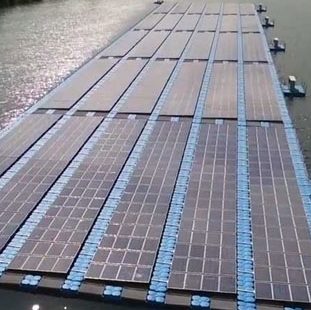
Authored Column : Rahul Kanotra –Founder & Director – Inventocean Technologies Pvt. Ltd.
Importance of Mooring and Flotation system in a Floating Solar Project
Though, a number of technological innovations are underway to further boost the efficiency and cost of installation of floating solar systems.
Safety Issues, Degradation, and Corrosion: Since floating solar involves water and electricity, more consideration must be given to cable management and insulation testing than on land, especially when cables are in contact with water.
A floating solar plant has moving parts that are subject to constant friction and mechanical stress. Thus a poorly designed and maintained systems could suffer tragic failures.
The power and electronic parts of a floating plant are subject to severe environmental conditions and susceptible to degradation, corrosion, and bio-fouling. The installation is at risk of degradation and corrosion due to moisture, especially in more aggressive coastal environments.
Understanding of Water-bed Topography: Developing floating solar projects requires a thorough understanding of water-bed topography and its suitability for setting up anchors for floats.
“Underestimate the floating solar is another factor that must be addressed. The primary challenge is that the floating solar projects are for 25 years. All others come second, unlike ground mount, floating solar must keep the fundamental techniques intact, each site should have different designs depending on the topography of the area. There should not be a replication of the project.”
Deepak Ushadevi – MD & CEO at Ciel & Terre India
There are therefore many technical challenges in adopting floating solar systems, unlike ground-mounted solar systems. Despite these technical challenges, the future outlook for the floating solar segment looks positive.
Way Forward
India has revealed its commitment to cut carbon emissions by one-third by 2030 as a party to the Paris climate agreement. Considering a huge potential and inherited benefits, the floating solar technology could offer an advantage of scaling up and replicating the success of ground-mounted systems in India.
“Requires much more value chain players in the Floating ecosystem to strengthen the entire system’s stability and economics. Solar PV Floating just crossed the infant stage and requires much more time to mature with better policy benefits to cover most of the existing water bodies with PV Installations.”
Sai Charan – Technical Director, Jinko Solar
While challenges such as high capital and operational costs and maintenance costs and a lack of technical expertise are very minor compared to the diverse advantages of floating solar technology.
“In a country like India with a large population, limited land space, and growing energy needs, floating solar turns out to be the perfect answer. A lot of developers and government sectors are opting for floating solar.”
Deepak Ushadevi – MD & CEO at Ciel & Terre India
Floating solar, as seen from the imposing project pipeline, is becoming commercially and technically viable with passing time.
It is motivating to know that the project costs of the floating solar segment have fallen over the years and project size is expected to continue to increase in the future, which will further increase this segment’s financial attractiveness.
Going forward, it is imperative that policymakers and procurement agencies – make specific market interventions to exploit the potential in the segment.


